Bison History
Bison History
Monarch of the Plains
Let us introduce you to the majestic North American Bison, who has
lived up to the name given him by the great Sioux Nation.
"Tatonka" - "The Spirit Animal."
Approximately 25,000 years ago the genus Bison passed from Asia, over the Bering Strait land bridge, to North America. Fossil bison from this era were twice the size of modern day bison, weighing around 5,000 pounds with 6 foot horn spans! Bison adapted well to the environment of the North American Great Plains, and flourished in huge numbers (an estimated 60 million animals were present in the 1700's). Their geographic range extended from Canada to Mexico and from Buffalo New York west to the Rocky Mountains.
The great herds of native Bison assured that there was never a shortage of food for the Plains Indians who inhabited these great grasslands. Bison was not only their main diet, but also provided materials for shelter, clothing, and many other staples of Indian lives. Bison was their life, their blood, their culture, and their future; only the Great Spirit himself was put above the bison.
Bison were hunted in various ways. Before the Indians rode horseback, they would encircle the herd with tribe members on foot. By getting the animals to mill within the ring they formed, Indians were able to fire large volleys of arrows into the herd until they downed an adequate number of animals.
In the 16th Century, when horses were acquired by the Plains Indians, bison hunting became easier. The Indians used other methods to harvest the mighty buffalo: stampeding herds over a cliff, driving the animals into a large natural trap, or into bogs or blind canyons. The most famous hunting technique was the "horse surround." Several hundred riders would form semicircles on two sides of the herd, then move in until they created a circle around its entirety. As pressure was applied by the oncoming riders, the bison would begin to get confused, start milling and eventually stampeded into a frenzied milling mass. At this point, riders would move in and begin the slaughter with showers of arrows or plunging lances.
I was born upon the prairie, where the wind blew free, and there was
nothing to break the light of the sun. I was born where there were
no enclosures, and where everything drew a free breath. I want to die there,
and not within walls. I know every stream and every wood between the
Rio Grande and the Arkansas. I have hunted and lived over that country.
I lived like my fathers before me, and like them, I lived happily.
- Ten Bears, Comanche
Virtually every portion of the bison was used by the Indians. The Indians invented numerous ways to prepare bison meat for consumption. Some parcels were eaten raw, some were cooked and other portions were dried as pemican, or jerky, a dried meat and fat concentrate. Hump roast was considered a real delicacy. Hides were used to make footwear, clothing, bedding and shelter. Bull hides were too heavy for teepees (cow hides served this purpose) but were used for floors and sleeping mats. Sinew was used for sewing and binding. Bones were utilized as tools. Bison played a part in practically every aspect of Indian life. Early explorers and pioneers found bison trails to be level and safe passageways, extolling them because they were well packed down and did not lead to swamps or quicksand. In fact, many of our modern day roads and interstate highways were once bison trails!
Megaherbivores, including elephants, rhinos, and buffalo, evolved large size in part to avoid predators -- thus they exhibit little fear and stand their ground when approached by a puny human being. Of course, eventually humans invented gunpowder and in the late 1800's, Bison were almost hunted to extinction in an attempt to eradicate the Indians. Both the railroads and the Army encouraged the mass slaughter. For $10, people took luxury trips to shoot bison from the windows of the trains crossing the plains, leaving the great beasts’ rotting bodies to litter the country.
I love the land and the buffalo and will not part with it.
- Satanta, Kiowa
General Sheridan said that buffalo hunters did more in five years to defeat the Indians than the U. S. Army could do in 50 years. Professional buffalo hunters shot hundreds of bison daily until their gun barrels were red hot. Most bison were killed for their tongues and hides and their remains were left behind to rot on the prairie. Bison herds were depleted so quickly that some of the same people who killed them later collected mountains of bison bones to be sent east by rail and crushed for fertilizer.
By 1885, fewer than 1,000 animals remained.
But thanks to some early pioneer ranchers (like Charles Goodnight in West Texas) who caught and began to replenish herds through closely guarded breeding programs, bison are now once again prolific and have reached a number which exceeds 450,000 head in North America alone.
The original story, ‘Monarch of the Plains’ was written by Eric Pianka, a founding member of the Texas Bison Association. The information you see here has been taken from that original writing. Thank you to all of those who have gone before us, for building a strong foundation on which we now grow.
You, O buffalo, are the earth! May we understand this!
-Lakota Sun Dance prayer
